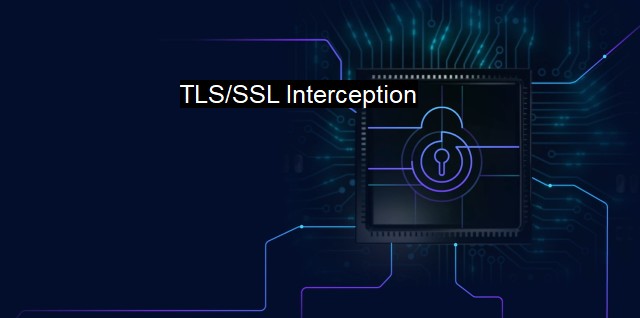What is TLS/SSL Interception?
The Debate Over TLS/SSL Interception and Its Role in Enhancing Cybersecurity
Transport Layer Security (TLS) and Secure Sockets Layer (SSL) are cryptographic protocols designed to provide security and privacy over a computer network, in particular, the Internet. They encrypt sensitive data, ensuring that communication between a client, such as a web browser, and a server is secure and confidential. SSL is the older of the two protocols, and while it is still in use, it is incredibly rare, as it has several known vulnerabilities. TLS, on the other hand, has rectified many of these issues, and as a result, is the predominant protocol used today.Now, let’s shift our focus to the concept of TLS_SSL interception, often referred to as an SSL or TLS inspect or "SSL man-in-the-middle attack.". This is a technique used within cybersecurity realms, particularly in the operation of internet security devices such as secure email gateways, wireless access points, Unified Threat Management Systems, firewall devices, and antivirus solutions. These security technologies use TLS_SSL interception to scrutinize Internet-bound traffic for suspect content or malicious activity, a necessary mechanism for efficient cyber threat detection.
TLS_SSL interception involves decrypting the encrypted connections made between a client and a server, inspecting the content for viruses, malwares, or other threats, then re-encrypting this content before sending it along its way. In order for this to happen, the intercepting proxy must present a valid certificate that the client will accept. Hence, it acts as a 'man in the middle' - an intermediate entity, standing between the client and server, decrypting, and re-encrypting communications.
One aspect of TLS_SSL interception that needs highlights is that it must be performed with care and integrity due to privacy and integrity considerations. A tousled interception can open up vulnerabilities, turning what would be a supposedly secure line of communication into a prospect for attacks.
This paradoxically led to different perspectives concerning TLS_SSL interceptions. Cybersecurity experts advise against it, due to the potential for abuse and the possibility of introducing security vulnerabilities. Yet, some organizations adopt it for oftentimes legitimate reasons, stating it is critical to their security posture as intruders increasingly use encrypted communication to obscure malicious activity.
Antivirus makers employ TLS_SSL interception as a detection mechanism in their software. The interception can uncover, inspect, hinder, or smother potentially malicious activity or content within the traffic as it is redirected for processing alerts or threats. Without this capability, encrypted web traffic could theoretically sneak past antivirus defenses, spelling vulnerabilities open for exploitation by malware.
Despite the controversy surrounding it, TLS_SSL interception will likely retain its high relevance in cybersecurity and antivirus landscapes. Technology and methods continue to blossom to mitigate interception's potential downsides. Therefore, entities applying this technology must understand how it works and ensure it improves security levels.
These are tough, thrilling times for cybersecurity and IT professionals. As phishing, ransomware attacks, and other cyber risks escalate, they must continually evaluate and modify approaches, tactics, and technologies to withstand these increasingly sophisticated threats. They understand that TLS_SSL interception, notwithstanding any inherent faltering, provides essential security measures.
Although the balance is delicate and considerations are multifarious, maintaining the right function of TLS_SSL intercept can make the difference between a business reputably tolerating within the wired, weary, and risky Internet landscape – or becoming another second-hand account of a calamitous data breach. TLS_SSL interception, hence, remains a high-stakes game in the cybersecurity world arena, one they cannot acquiesce but instead, must judiciously master.

TLS/SSL Interception FAQs
What is TLS/SSL interception?
TLS/SSL interception is a method used by some cybersecurity tools to inspect encrypted web traffic by intercepting and decrypting it.Why is TLS/SSL interception controversial?
TLS/SSL interception is controversial because it can weaken the security of encrypted traffic and potentially expose sensitive information to interception by malicious actors.What is the role of antivirus in TLS/SSL interception?
Antivirus software may use TLS/SSL interception to inspect encrypted traffic for potential threats or malware, but it must be done carefully to avoid compromising security.How can organizations balance security and privacy concerns around TLS/SSL interception?
Organizations can balance security and privacy concerns by carefully evaluating the risks and benefits of TLS/SSL interception, implementing strong encryption protocols and security measures, and transparently communicating with their users about their interception practices.| | A | | | B | | | C | | | D | | | E | | | F | | | G | | | H | | | I | | | J | | | K | | | L | | | M | |
| | N | | | O | | | P | | | Q | | | R | | | S | | | T | | | U | | | V | | | W | | | X | | | Y | | | Z | |
| | 1 | | | 2 | | | 3 | | | 4 | | | 7 | | | 8 | | |||||||